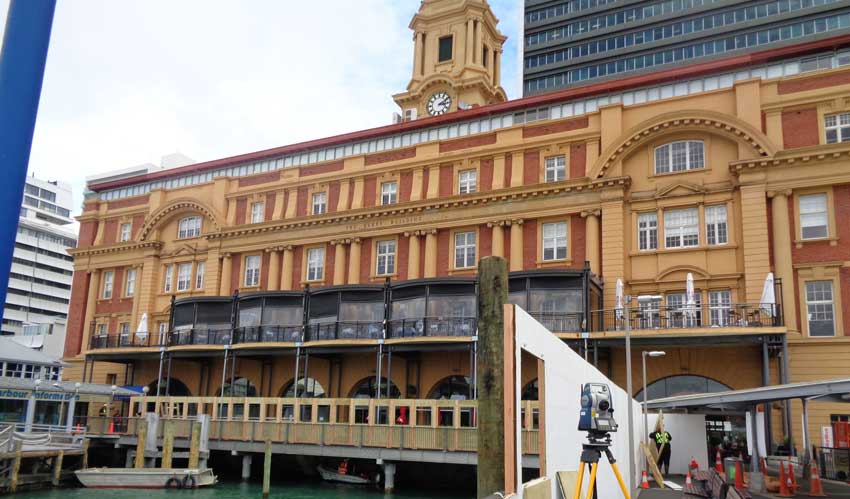
Bob Hick Earthmoving is a New Zealand construction company based in Silverdale, north of Auckland. Recently the firm invested in the latest Remotely Piloted Aircraft System (RPAS) technology to increase productivity and improve safety for its surveying teams on large projects. Survey Manager Chris Lübbe said the company did a great deal of research before settling on the DJI Phantom 4 Pro aircraft, complete with Propeller AeroPoints for ground control, along with Pix4D and Virtual Surveyor software for data analysis and visualisation tools. “We were looking for the best solution for the company in the long term, with the right balance of value for money and return on investment,” Mr Lübbe said. “We needed a stable and reliable

Auckland’s Ferry Building is an historic landmark in the New Zealand city. In the 100 years since it was built, the sea wall supporting the structure was gradually eroded by constant sea movement and wash from ferries docking and leaving the port. Divers discovered a large three-metre scour at the base of the sea wall that needed to be repaired and stabilised to ensure the safety and longevity of the building and underlying structure. After closer inspection a number of additional holes in the seawall were discovered. To ensure there was no damage to the building during repair works, Auckland Transport enlisted the services of CKL – a local engineering and surveying firm – to monitor the structure.

Collision awareness and proximity detection technology originally developed for the mining industry is set to become standard on major civil projects to protect workers and increase transparency for project managers. With limited space to manoeuvre and multiple heavy machines working in close proximity, roadside infrastructure projects can be a dangerous worksite. To reduce the risk of collisions between plant, people and utility or other fixed assets, geospatial positioning equipment distributor Aptella has introduced a range of proximity detection systems for civil construction applications by manufacturer Blue Electronics. Although collision awareness technology was initially developed to increase safety in mining applications, Blue Electronics’ solutions come with a enhanced features and failsafe measures to make them suitable for civil projects. Harry Katsanevas, Aptella

Sokkia introduces the latest addition to its iM line of manual total stations designed to provide powerful performance in an affordable package — the iM-50. “Whether operators need an instrument for jobs such as site layout or perhaps as-built survey, the iM-50 offers the perfect solution with high-end performance and exceptional functionality,” said Ray Kerwin, director of global surveying products. The iM-50 EDM features a prism range of up to 4,000 m and up to 500 m in reflectorless mode with a 1.5 mm/2 ppm accuracy. “The beam can precisely measure walls, corners, manholes on the road surface, even chain-link fences and tree branches. It offers a rapid distance measurement of 0.9 seconds regardless of the target,” he said. The instrument offers integrated





